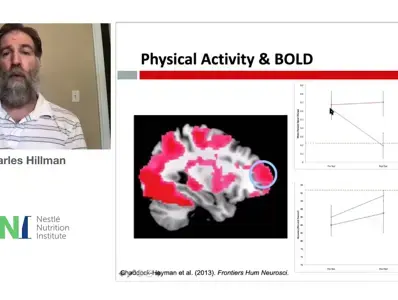NNIW95: Physical Activity, Brain and Cognition
Physical activity (PA) can improve physical, mental, cognitive, and brain health throughout the lifespan. During preadolescent childhood, the benefits of PA for cognitive health have been widely studied, with evidence indicating enhanced executive control, improved academic performance, and adaptation in underlying brain structure and function. Across school age children, the predominant literature has focused on preadolescent children, with a comparatively smaller body of evidence in adolescent children. Yet, preliminary findings suggest improvements in verbal, numeric, and reasoning abilities, and academic achievement. Further, benefits of PA are also rarely examined in preschool children. Consequently, lack of standardization across studies has led to various approaches in the measurement of PA and fitness. However, since implementing tools that objectively quantify active play, PA has been related to better executive function, language acquisition, and academic achievement. Despite evidence that PA promotes cognitive and brain health during development, a growing number of schools have minimized PA opportunities across the school day. Accordingly, today’s children have become increasingly inactive, contributing to public health and educational concerns. By dedicating time to active play, sports, physical education, and other forms of PA, children are best-positioned to thrive in both the physical and cognitive domains.
If you liked this post you may also like

